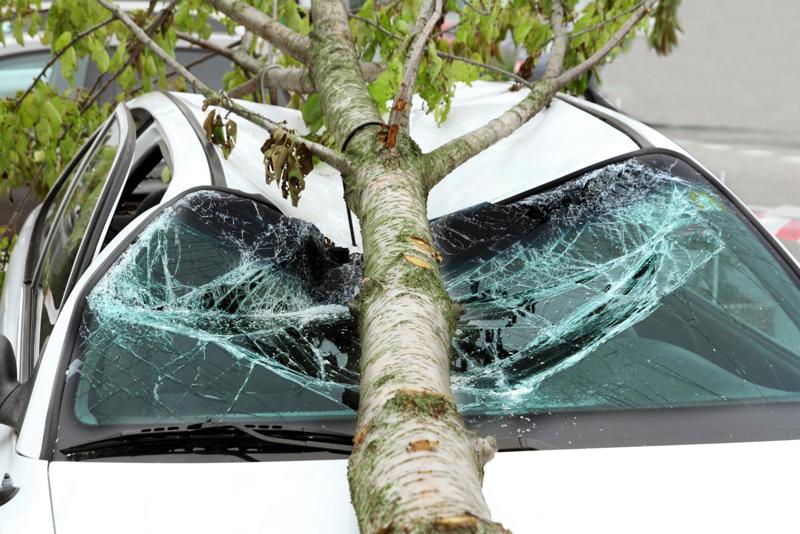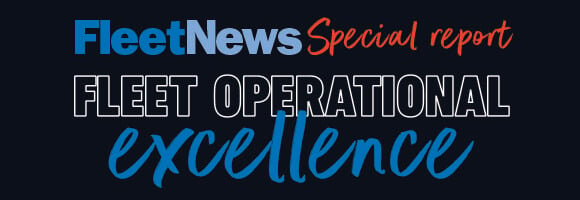This feature was taken from our Fleet Operational Excellence special report

The rising cost of vehicle insurance is proving a real issue for fleets, as the knock-on effects of the move to electric, increasing amounts of advanced technologies and soaring parts prices begin to bite.
In 2023, consumer insurance costs rose 25%, says professional services firm EY, and will rise a further 10% this year. Fleets are typically facing similar increases.
These are hitting both internal combustion engine (ICE) and electric vehicles (EVs), although zero-emission models are suffering more.
“We’re seeing the average cost to repair an EV compared with an equivalent ICE vehicle can be towards 25% more expensive for a like-for-like crash involving a like-for-like vehicle, and it can take 14% longer to repair,” says Chris Jones, chief financial officer of Admiral Pioneer.
An EV will take an average 60.7 days to repair, compared with 53.1 for an ICE vehicle. An EV will cost an average of £2,789 to repair compared with £2,188 for an ICE vehicle.
“It will obviously vary by make and model, and around the country,” Jones adds.
These figures come from a report compiled by Thatcham Research, which says the most significant challenges originate from the vehicle’s traction battery, which represents a substantial percentage of the original vehicle value and is, therefore, negatively impacting the economic model of vehicle repair.
Its analysis found battery costs vary widely from high-end vehicles, currently around £29,500, to the low-end, around £14,200.
The ‘depreciation curve’ of battery cost versus average used value, says Thatcham, shows the cost of a replacement battery can be more than the used price of a vehicle after only a year.
“Without meaningful change, there is a strong likelihood that claims costs will continue to rise disproportionally,” says Adrian Watson, head of engineering research at Thatcham Research.
“Most of the motor insurance industry is yet to adapt to mass battery electric vehicle (BEV) adoption challenges, and the implications remain unquantified on repair capacity, training and skills, cost, and the lifetime sustainability of BEVs.
“This lack of awareness means many BEVs are deemed irreparable, leading to premature write-offs because of high battery cost and the lack of value the UK ecosystem can recover from them.”
Connected technologies
However, while advanced technologies are increasing the cost of repairs, there is one type insurers are using to enhance their product offerings – connectivity.
“The insurance industry is continuing to develop new products and technologies to manage risks and provide innovative solutions,” says Jones.
“Connected vehicles and telematics devices generate a significant volume of real-time data on vehicle performance, location and driver behaviour that can be used to personalise insurance policies and improve overall road safety.”
For example, Admiral Pioneer has entered into a partnership with London-based InsureTech scale-up Flock, with its product rewarding fleet customers for safer driving throughout the policy period with premium rebates of up to 10%, provided it is evidenced by telematics.
It also gives fleet managers access to a digital platform where they can check how their vehicles are being used, a prediction on the cost of insurance, and a ‘safety board’ which provides regular safety reviews.
There are also other ways fleets can help reduce insurance spend in the current climate.
Offering to carry a higher excess on a policy could help lower premiums as the organisation accepts more of the risk on their own balance sheet.
This is something a fleet should discuss with its brokers and then through to the insurance and underwriting side.
A fleet could also consider self-insuring, which is when it increases the excess that it bears to the level where it effectively insures only for losses that it causes to third parties.
Taking this action should involve careful consideration of the current level of claims it has, as well as the number of vehicles on fleet.
It can use this to work out what the cost is per vehicle across the entire fleet, and whether this is lower than the insurance premium.
If this is the case, then the maths could show you how much money that would’ve been spent on comprehensive insurance premiums to put aside to pay for your own repairs and write-offs.
Reducing claims
While this method is best suited to large fleets, one approach which applies to all organisations is to reduce the number of claims it has.
This can be done by taking a firm grasp of risk management, and demonstrating to the insurer they have systems in place to improve driver and vehicle safety.
An improved claims record should be recognised with lower premiums.
Between 2020 and 2022, railway infrastructure and construction company TES 2000 saw its insurance premiums cut by 20% after reducing its at-fault damage costs by 60%.
When Mick Kiely joined the company as its first professional fleet manager in 2020 he met with insurers to examine its claims history and, after outlining his safety ambitions, received a significant financial contribution towards a risk management programme.
This allowed TES 2000 to bring in Red Fleet Driver Training’s e-learning solution, which creates a profile for each driver and provides access to a wide range of e-training modules.
A new employee’s fleet safety journey begins before they join. When they get an interview, TES 2000 carries out an online licence check.
The use of technology such as telematics and dashcams – also used by TES 2000 – to identify poor driving and take corrective action, is viewed favourably by insurers, who may contribute to the cost of the equipment.
Dashcams can also provide data for defending claims or swiftly settling at-fault claims. They are particularly effective in crash-for-cash scenarios.
Organised fraudulent vehicular claims cost the industry hundreds of millions of pounds a year.
“If you’ve got some initiatives, like you want to fit cameras, then get your insurance company on board,” says Aaron Powell, fleet director at Speedy Asset Services. “They may contribute financially because it helps them in the long run.”
Ian McCarron, director of fleet insurance broker McCarron Coates, says there are other benefits of striving to impress an insurer.
“A fleet is inevitably better run, easier to manage, experiencing less downtime, boosting its productivity and becoming more profitable,” he adds.
“It’s not just premiums that can be kept down, but many other costs associated with poor risk management too.”

Boost efficiency, cut costs and improve compliance across all areas of your business with the Fleet News Operational Excellence report.
Delve into crucial topics for effective fleet management, including electrification, digitalisation, alternative funding, and compliance. To give you an edge, we've gathered insights from top industry experts who reveal their best practices and innovative strategies.
Dive into these highlights and read the full report to unlock the secrets of running a more efficient and effective fleet operation.





















Login to comment
Comments
No comments have been made yet.